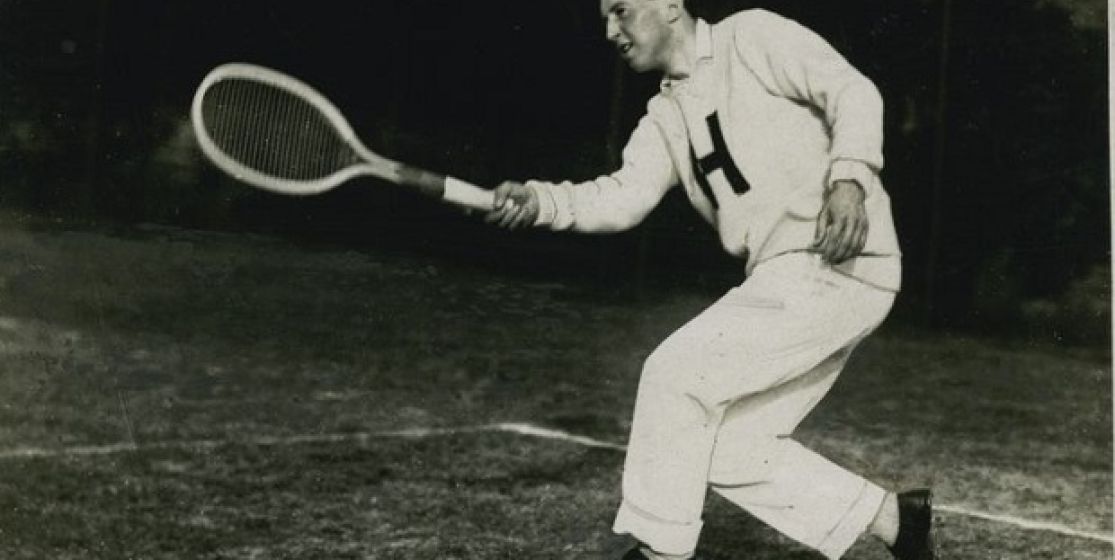He's one of the most famous survivors of the Titanic: Richard Norris Williams had boarded the passenger liner with his father; he was going to the United States to enter the famous university of Harvard. Of the two, he's the only one who survived, miraculously, and later became one of the greatest tennis champions of his era.
It was only at the end of his life that he finally accepted to discuss that fateful night of April 1912. Half a century after the sinking of the Titanic, the historian Walter Lord, author of the book A night to remember, listened to the testimony of this man who was then a septuagenarian, and died a few years later in 1968, at 77 years old. His name: Richard Norris Williams II, often shortened to Richard Williams or "Dick" Williams. He told the historian how he felt the shock of the ship hitting the iceberg, while he was with his father in their luxurious cabin on the deck C. When he went out to see what happened, he had to rescue a panicked passenger, stuck in his own cabin and unable to open the door. Richard Williams smashed it with his shoulder, freeing the unfortunate while a steward threatened to report him to the White Star Line, the company that owned the Titanic, for material damage! An episode that would also inspired a scene to James Cameron in his famous movie about the disaster ... Back on the ship: Richard Williams told Walter Lord that it was about midnight when him and his father headed for the deck A, which was already closed. They found refuge in the gymnasium, where they stayed for a moment with some other passengers, not knowing what to do. The boat was sinking in icy water and breaking down more and more every minute.
Several hours with his feet in icy water
Suddenly, one of the huge funnels fell and crushed in its fall dozens of people who were trying to leave the ship in lifeboats. While his father was amongst the victims, Richard Williams miraculously survived. What remained of the funnel continued to spit out a lot of smoke. Stunned, on the verge of suffocation, the young survivor had no other choice but to jump into the water. At the beginning, he recalled, everything seemed quiet in the water, then he started to hear the screams of the 1600 people who were fighting for their life in a sea of ice. Over the minutes, however, he told the historian, the screams became increasingly scarce, as people were freezing to death. Richard Williams saw the bodies stiffen in the lifejackets. He managed to reach a raft which was half submerged. To swim that far, he had to get rid of his fur coat and boots. The wait, unbearable, lasted for several hours, until the arrival of the first ship on the scene of the tragedy. Williams had to survive with his feet in the water. On the thirty people who had taken refuge on the same raft, only eleven survived the cold.
His doctor recommended amputation
The RMS Carpathia, a British transatlantic liner arrived on site, rescued them hours later. The frostbites on the feet and legs of Williams were such that a doctor decided to amputate in order to prevent gangrene. But he refused, despite the excruciating pain. Instead, he explained that he forced himself to walk on the decks for at least every two hours, including at night, to allow the blood to flow back into his limbs and warm them up. The pain was worthy: when the Carpathia arrived in New York Harbour on the 18th of April, he was walking. Not readily, but he could walk. He went to his family home in Radnor, Pennsylvania, alone. The body of his father, Charles Duane Williams, was never found. The Williams family was very prestigious since they were direct descendant of Benjamin Franklin. A lawyer based in Geneva with his family, Charles Duane Williams was a big tennis fan. On the 1st of March 1912 in Paris, he was one of the founders of the International Tennis Federation. It was then a little over a month later that he boarded the Titanic to his home country with his young son Richard, 21 at the time, who wanted to study at Harvard.
A renowned player... and a tough guy
At the time, he was already a great hope of tennis, a sport he practiced on the recommendations of his father. Born in Switzerland and fluent in French and German in addition to English, the young man decided to stay in the US after the disaster and do what he had left Europe for: attend university and play tennis at a high level. He became very successful at both, graduating in finance and winning numerous tournaments, including two victories at the US Open in singles in 1914 and 1916, two Davis Cup in 1925 and 1926 and an Olympic gold medal in 1924. Very aggressive on the courts, he was known to be a tough player, who managed to adapt his style to his disability. Indeed, his weak legs were often very painful when the match was too long. When his playing career ended, Richard Norris became a respectable banker in Philadelphia, where he settled permanently and died on the 2nd of June 1968. In the pocket of his jacket, he still had the flask that his father had given him a few minutes before his death.






